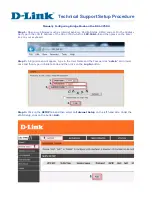
Software User Manual
D-Link Unified Access System
02/15/2011
Document 34CS3000-SWUM104-D10
Page 33
Section 3: Planning the D-Link Unified Access
System Network
The D-Link Unified Access System provides continuous, high-speed access between your wireless and Ethernet devices. It
is an advanced, scalable, standards-based solution for wireless networking. The D-Link Unified Access System enables
wireless local area network (WLAN) deployment while providing state-of-the-art wireless networking features.
This chapter contains the following sections to help you plan your D-Link Unified Access System:
•
“System Requirements”
•
“WLAN Topology Considerations”
•
“Network Planning to Support Layer 3 Roaming”
S
YSTEM
R
EQUIREMENTS
You accomplish the initial D-Link Unified Switch configuration by using a direct cable connection. After the initial
configuration, you can manage the Unified Switch by using a Web-based user interface (UI), command line interface (CLI),
or SNMP. The following list describes the minimum requirements you need to install and manage the D-Link Unified Switch:
•
VT100 terminal or PC with terminal-emulation software
•
Direct serial connection to the console port of the D-Link Unified Switch
•
Remote system for management access with a Web browser, Telnet/SSH client, or SNMP manager
To support security and networking features in D-Link Unified Access System, you can use the following optional equipment
on your network:
•
A RADIUS server for authentication and accounting features for wireless clients, access points, and peer Unified
Switches
•
Network equipment that supports VLANs
•
A DHCP server to dynamically assign network information to the switch and to all access points
•
A Syslog server for external logging
<Link>Figure 7 shows a simple D-Link Unified Access System deployment with required and optional equipment for setup
and operation.
















































